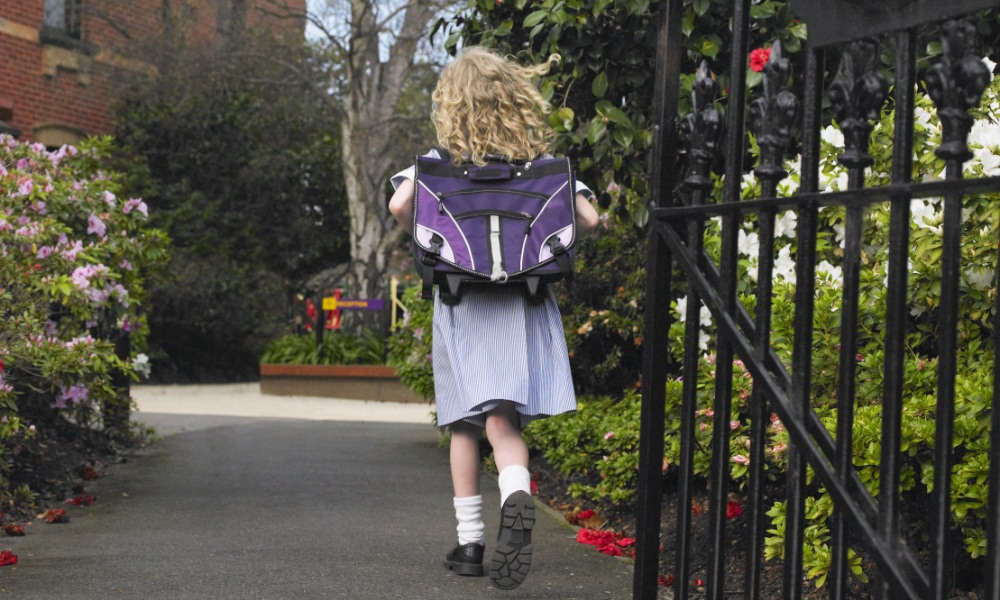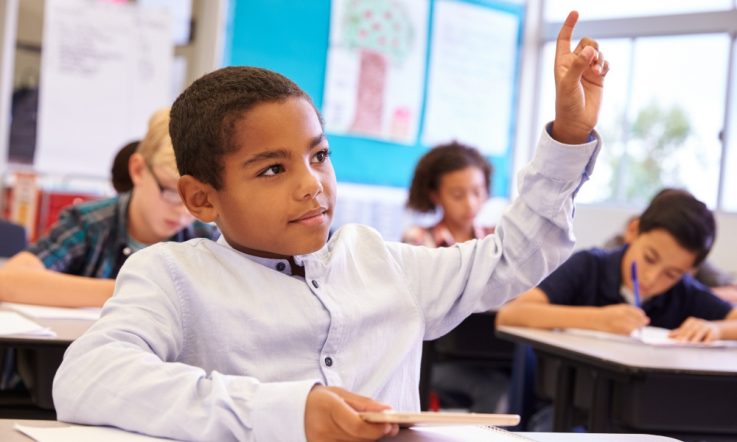Hello, thank you for downloading this podcast from Teacher – I'm Rebecca Vukovic.
In this episode of our Behaviour Management podcast series we speak to Associate Professor Anna Sullivan from the University of South Australia. Since 2011, she's been working on the Behaviour at School Study, which explores the existing state of student behaviour in South Australian schools. To date, two reports have been published, which detail the findings of the initial stages of the project. The second stage findings have resulted in a framework for developing and enacting humane behaviour policies and practices in schools. In today's interview, we talk more about what it means to enact respectful, school-wide behaviour policies and the role of school leaders in doing so. But to kick things off, Anna gives listeners a brief overview of what this whole study is about.
Anna Sullivan: We wanted to investigate what's going on in schools, around basically school discipline and behaviour. At the moment, or for some time really, there's been quite a lot of concern around behaviour in schools and it's been described by some people as almost like a ‘moral panic', that schools are out of control, that students aren't behaving, teachers can't teach, it affects the performance of students and that sort of thing. And we wanted to find out: Is that true? What's going on? We've also learnt more recently that there's a really strong link between student engagement, student behaviour and academic achievement. So the area of school discipline is of great importance, not only to the students and their achievements but the school and the way it can work, parents and the broader society.
We had a large Australian Research Council grant with many partners to investigate what's happening in relation to school discipline and behaviour in schools and we focused on South Australia as the case about what's happening. So we had two major investigations, the first one was to investigate teachers' perceptions of behaviour, their nature, and extent of behaviour issues in schools. And the second one of that phase was what strategies do they use to manage that and how prevalent are they? And once we'd finish that, we moved into the second phase of the project and we identified schools that are doing behaviour work well if you like – taking all the policies and practices together in a way that is supporting students to be engaged and productive – and find out how those schools are taking all the policies and things together, in a coherent way, to support students. So we did some case studies delving into specifics about what schools are doing.
Rebecca Vukovic: Earlier this year, Anna wrote an article where she said that teachers shouldn't be left to manage discipline by themselves and, in fact, it's more effective if they work together to resolve student behaviour issues. Drawing on her research from the study, I asked her to share what this would look like in practice.
AS: The research from the Behaviour at Schools Study shows that teachers are, on the whole, very stressed and find managing student behaviour quite difficult. And surprisingly from the project [it] wasn't the aggressive, anti-social behaviours, they do occur but they're not actually that prevalent. It was more the disengaged, being late for class, avoiding doing schoolwork, mucking around and low level disruptive behaviours that are really prevalent in classrooms and that teachers find very, very difficult to manage. They use strategies like having a conversation with them [students], trying to reason with them in class or out of class. Or they use what we call ‘Step systems', where they remove them from the learning environment to try and get them to think about their behaviour, so teachers can get on with things and students can get on with things. But the teachers have told us that that doesn't work. It doesn't change the behaviour of the student. So they get quite stressed and we also know in particular that early career teachers find managing student behaviour in their learning environments very, very challenging and very difficult and it's one of the major reasons that they provide for leaving the profession.
So, with all of that in mind, what we found when we went into the five schools was they did things a little bit differently to what traditionally would be expected in schools. They modified the architecture, where possible, when they were building learning spaces, or in old buildings, they took away doors, they arranged teachers so they could work and encourage them to work collaboratively. So instead of a teacher being quite isolated, let's say in a primary classroom all day, doing their own thing with their students, they would work with other teachers and other students so that they were always working collaboratively.
What that means is that if they've got a student who is, I don't know, presenting with some challenging behaviours, often a teacher can't just spend a minute with them and move on and that's fixed. They might have to sit down [and] maybe it's a conflict resolution issue, work through a process to help resolve that conflict with the students or other students, and of course that takes that teacher away from the rest of the class. So if they're working on their own, they can't do that. So what they tended to do for many, many years is just remove that student from the learning environment so they can continue with their teaching and the other students. But we know that exacerbates the problem.
But, if they're working collaboratively and closely with other teachers and it's all easy to do, they might have the other teacher take over, monitoring what the students are doing, so that the teacher can go and resolve that particular conflict with a small group of students. So it's more seamless, more supportive, and it helps actually address the issues to begin with, early on, it allows them to do that, and so they aren't exacerbated, [they're] de-escalated and then the teachers are less stressed and they enjoy their work more and that sort of thing.
RV: When analysing the data in this study, the researchers found that there were five common themes across the case studies that showed how schools enacted respectful student behaviour policies. Here, Anna talks listeners through the five themes.
AS: [We] found that across the schools, what was really common was they all had a philosophy for what we called ‘enacting humane behaviour policies'. So, they were really committed to treating students and families well, they had really clear principles and values, which they used to guide the way they did things and the decisions they made in the school. And they were all completely different, but they were all respectful. So some were about respect, excellence, cooperation, honesty, community – all those sorts of ideas guided the way they did things.
Some of the schools that we went in and researched were described as what's commonly known in Australia as quite ‘challenging' sites, students with quite complex needs, and those schools really rejected deficit views of students and their communities. So really, clearly, committed to the ethic of care of the student and the family, committed to fostering social and emotional wellbeing, really focusing on the educative relationships that they could provide and providing really rigorous learning environments through engaging pedagogy. So that was sort of the key philosophy.
They were so committed to that, one of the next themes that we found was, is they made sure they had the right staff to enact that philosophy. It wasn't just a focus on the teaching personnel, it was on anyone who worked at the school – it could have been the person on the front desk, the person running the canteen, or whatever. For example, we had principals tell us when they had started at those schools that there might have been staff members who used to yell at students or be really grumpy with them, they made sure that those staff members were really clear that that's not how we treat people, we want to treat them humanely, we want to treat people respectfully and they gave those staff members the chance to change the way they interacted with students and families in their school, and if they didn't change and they didn't adopt that positive philosophy for working with students, they actually moved them out of the school. …The principals of these schools just said we cannot have a member of staff in any role going against the way we treat children because then it provides an uncertain environment for them. So they were really, really clear about that.
The third theme that we found that was very interesting. In these schools, they placed a real important priority on what we called ‘the place and space' – and that's the architecture, the design of the buildings, the furniture, how things were laid out, the outside areas. From the very moment that you arrived at the school – the front gate – making sure it was all welcoming and it looked lovely, neat and tidy, a place where kids and families wanted to come. … One of the secondary school principals went in and took all the doors off all the classrooms so that it was more open and fluid and to encourage teachers to work together. So, that was another surprising finding.
The fourth one was around what we called ‘fostering an engaged and supportive school community'. I think all schools think they do that, but we found something special in these schools and that was the way they went beyond the meetings with parents and the barbecue and the newsletter and they did other things. So [being] committed to building really supportive environments with the families was another key issue.
The last one was, when all that doesn't work, what happens? What policies and practices do they actually use when things aren't working. I think the major thing we found was, because they were focused on a more of an educative approach than what we would call a punitive approach (like punishing kids) …One was seeing things as a problem or a conflict that needed to be resolved. And so the schools just had different processes, some were using restorative practices, different versions of that, and some were using tribes and circle times and all sorts of different things. But they had common practices across the schools which enabled them to focus on issues that were related to behaviour as a problem that needed to be solved in usually educative ways. So, maybe it was that the student had anger management issues: What can we do? Let's build a program for all our students about how to manage anger and identify that, and support the teachers to utilise different strategies. …So there was a really clear leadership in those schools to support teachers to think about behaviour issues in different ways so that they collaborated together, saw the issues as a problem that needed to be resolved, rather than needing to be punished.
RV: In one of the reports from this study (Johnson & Sullivan, 2016), the researchers write ‘the challenge for schools is to enact polices that do not aim simply to control students but rather aim to treat students with respect and enable them to develop as individuals …' (Johnson., Sullivan 2016). Here, I ask Anna to explain why it's important that school leaders emphasise student engagement rather than behaviour management.
AS: There was some research done in Western Australia a few years ago (Angus et al, 2009) that investigated the academic trajectories of students against their behaviour. What they found was, over four consecutive years, only 40 per cent of students were described as having what they call ‘productive student behaviours' – that's behaviours that help them with their learning and being at school – 20 per cent of students were consistently unproductive and then 40 per cent fluctuated. And what they found was that in that group, at any year, there were about 20 per cent of students who were described as ‘disengaged'. And when they mapped those students against their academic outcomes, they found that the disengaged students did not perform much better than the students who were described as uncooperative or challenging behaviours, and they never caught up academically. So being disengaged has a huge impact on students' academic achievement, and we're all interested in that.
But they're the students [the disengaged ones] who don't cause any problems in the classroom, they might actually be doing some work, but they're not really engaged with what they're doing. So that's really important for us in Australia to understand that a fifth of our students might actually be disengaged and not causing any problems, yet we don't really put any resources into those students, or into teachers, to reengage them or find other ways of dealing with them.
So, why is it important? Well, we found in our study that the schools that were doing things well didn't really talk about behaviour, they didn't really have evidence around the schools or in their policies or the way they taught that they were focusing on behaviour. They didn't talk about the naughty students or how they were going to manage it or those sorts of things. Their focus was always on learning, engaging students, what pedagogies they were doing, what they were doing with curriculum, just the whole focus was on that sort of professional discussion and that focus. So if they had a problem with the student, it was seen as ‘well we've got this student who is struggling in maths, what are we going to do about it?' And they'd wrap around that student and see it as an issue to be resolved from an educational point of view, rather than ‘the student is not behaving, so we'll implement these sorts of consequences and ring the parents', or whatever. So it was just flipped…
RV: Australian schools are required to implement school discipline-related policies that take into account state, territory and national legislation. Here, Anna shares the research and advice that school leaders should consider when enacting their own behaviour management policies and why it's important they have a clear vision when doing so.
AS: There's emerging research out of England (Ball, Maguire & Braun, 2012) that's looked at the challenges that schools have in bringing together all sorts of policies and policy documents, legislation, in a coherent way. We use that research to investigate the five schools; how do they actually do that? Because, in relation to discipline and behaviour, there are lots of different policies. There are polices about student welfare, about being absent from school, about special needs, let alone just the discipline policy.
Often those policies are drawn up by various different organisations or people and sometimes they don't actually support each other. So you might have a welfare policy, a student welfare policy or wellbeing policy that's about supporting students and being caring and developing their social skills. But then you might have a discipline policy that says, well actually no you don't get any chance, you get a warning, then you're going to go to time out or you'll get a detention or whatever. And you can see that they don't actually support each other.
The schools that we studied, what they did was have really clear values and principles that guided their decisions, and they brought policies together in what we would say is a coherent way, so they weren't conflicting and contrasting and banging up against each other. And it gave really clear guidance for all staff, all members of the community and students about ‘this is the way we do things'. They also had to do the mandatory things like filling in documents and data or whatever for, often, their department or whatever, and they still did that, but they made sure that they prioritised policies and practices that assisted the way they wanted to do things in their schools.
That's all for this episode, to keep listening or to download all of our podcasts for free just visit acer.ac/teacheritunes or you can head to soundcloud.com/teacher-ACER. You'll find more information about the study we've talked about today in the full transcript of this episode at teachermagazine.com.au. That's also where you can access the latest articles, videos and infographics for free.
References
Angus, M., McDonald, T., Ormond, C., Rybarcyk, R., Taylor, A., & Winterton, A. (2009). Trajectories of classroom behaviour and academic progress: A study of student engagement with learning. Mount Lawley. Western Australia: Edith Cowan University.
Ball, S. J., Maguire, M., & Braun, A. (2012). How schools do policy: Policy enactments in secondary schools. Oxon, London: Routledge.
Johnson B., Sullivan A. (2016) Against the Tide: Enacting Respectful Student Behaviour Polices in ‘Zero Tolerance' Times. In Sullivan A., Johnson B., Lucas B. (Eds) Challenging Dominant Views on Student Behaviour at School. Springer, Singapore
Dr Anna Sullivan says one of the common themes in relation to enacting respectful student behaviour policies was ‘fostering an engaged and supportive school community’. As a teacher, are you creating a safe and respectful classroom environment for students? What strategies do you use to build respectful relationships with students and families?
The academic adds that the school leaders she studied had really clear values and principles that guided their decisions. As a school leader, what determines the decisions you make on a day-to-day basis? How do you know you’re making the correct decisions for your school community?



